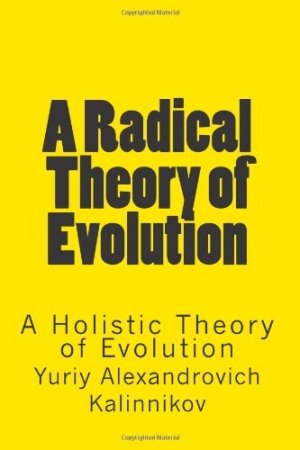
A Radical Theory of Evolution
A Holistic Theory of Evolution
Yuriy Alexandrovich Kalinnikov’s A Radical Theory of Evolution remained unpublished at the time of its writing, as did the larger work of which it was part (The Anatomy of Art, a Neurophysiological Basis of Created Stimulation, written in1984-1985) because its views were considered too revolutionary, especially as they came from an unknown author. However, considering current advances in knowledge about the brain, quantum physics, genetics, epigenetics, and other sciences, Kalinnikov’s theory of evolution can now be appreciated for what it is: a work that was ahead of its time, and which may, even now, offer new pathways for future exploration of the topic.
In concluding that awareness had to extend to the very matter and energy of which living things are made, Kalinnikov, a Russian neurophysiologist, was taking a stand against extant theories of evolution: that of mechanistic Darwinism, that of random mutations, and that of the creationists, none of which took awareness, instincts, and consciousness into account. Furthermore, in positing that awareness was present in the very building-blocks of life, making it possible for living things to direct their own evolution, Kalinnikov stepped beyond what other theorists may be willing to consider even today.
According to the author, “awareness is inherent in the entire biosphere,” and human awareness only differs from that of other organisms in that it is more developed. The major flaw in all materialistic theories of evolution, Kalinnikov asserted, is the denial that organisms are alive and, instead, merely materialistic systems of molecules that, when manipulated by the environment, will sometimes undergo random mutations. On a larger scale, these theories consider organisms, no matter what their stage of evolution, to be mere “pawns” in the process of life—“life” being defined as “an evolving aware process that has a strong tendency to perpetuate itself.”
Noting that the Western dualistic mindset finds it difficult to conceive of the possibility that there is a “subjective quality” inherent in matter and energy, Kalinnikov deftly traces the history of Western dualism through philosophy, science, and religion and forms a cogent discussion of how the more recent contributions of quantum physicists have enlarged the understanding of the topic, referring especially to the work of the late David Bohm, whose research pointed to the idea that “our awareness and that of the universe are one.”
“Incidentally, quantum physicists did not seek this awareness, but rather found that they could not explain their results without it,” said Kalinnikov. “Each year, more and more experiments prove that it exists.” Such experiments confirm the author’s belief that attempts to explain the world from the perspective of dualism are outdated.
Ivan Kalinskiy, also a Russian neurophysiologist, has done an admirable job of translating this valuable contribution to the literature from the original Russian. It is strongly suggested, however, that the book receive careful proofreading and line editing by professionals with a background in science whose native language is English to correct the errors of grammar, punctuation, and syntax that appear multiple times on almost every page.
Reviewed by
Kristine Morris
Disclosure: This article is not an endorsement, but a review. The publisher of this book provided free copies of the book and paid a small fee to have their book reviewed by a professional reviewer. Foreword Reviews and Clarion Reviews make no guarantee that the publisher will receive a positive review. Foreword Magazine, Inc. is disclosing this in accordance with the Federal Trade Commission’s 16 CFR, Part 255.
